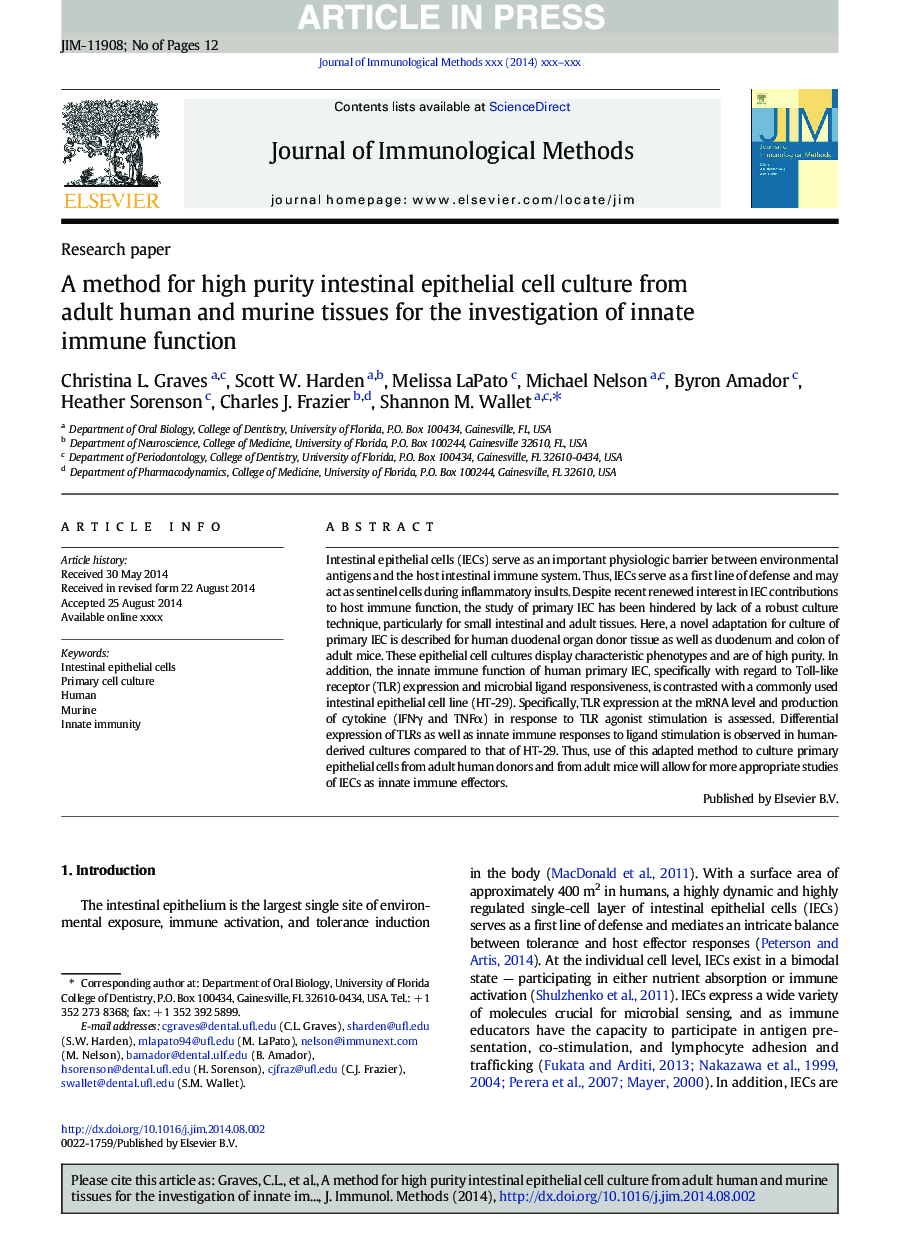| Article ID | Journal | Published Year | Pages | File Type |
|---|---|---|---|---|
| 8417638 | Journal of Immunological Methods | 2014 | 12 Pages |
Abstract
Intestinal epithelial cells (IECs) serve as an important physiologic barrier between environmental antigens and the host intestinal immune system. Thus, IECs serve as a first line of defense and may act as sentinel cells during inflammatory insults. Despite recent renewed interest in IEC contributions to host immune function, the study of primary IEC has been hindered by lack of a robust culture technique, particularly for small intestinal and adult tissues. Here, a novel adaptation for culture of primary IEC is described for human duodenal organ donor tissue as well as duodenum and colon of adult mice. These epithelial cell cultures display characteristic phenotypes and are of high purity. In addition, the innate immune function of human primary IEC, specifically with regard to Toll-like receptor (TLR) expression and microbial ligand responsiveness, is contrasted with a commonly used intestinal epithelial cell line (HT-29). Specifically, TLR expression at the mRNA level and production of cytokine (IFNγ and TNFα) in response to TLR agonist stimulation is assessed. Differential expression of TLRs as well as innate immune responses to ligand stimulation is observed in human-derived cultures compared to that of HT-29. Thus, use of this adapted method to culture primary epithelial cells from adult human donors and from adult mice will allow for more appropriate studies of IECs as innate immune effectors.
Related Topics
Life Sciences
Biochemistry, Genetics and Molecular Biology
Biotechnology
Authors
Christina L. Graves, Scott W. Harden, Melissa LaPato, Michael Nelson, Byron Amador, Heather Sorenson, Charles J. Frazier, Shannon M. Wallet,
